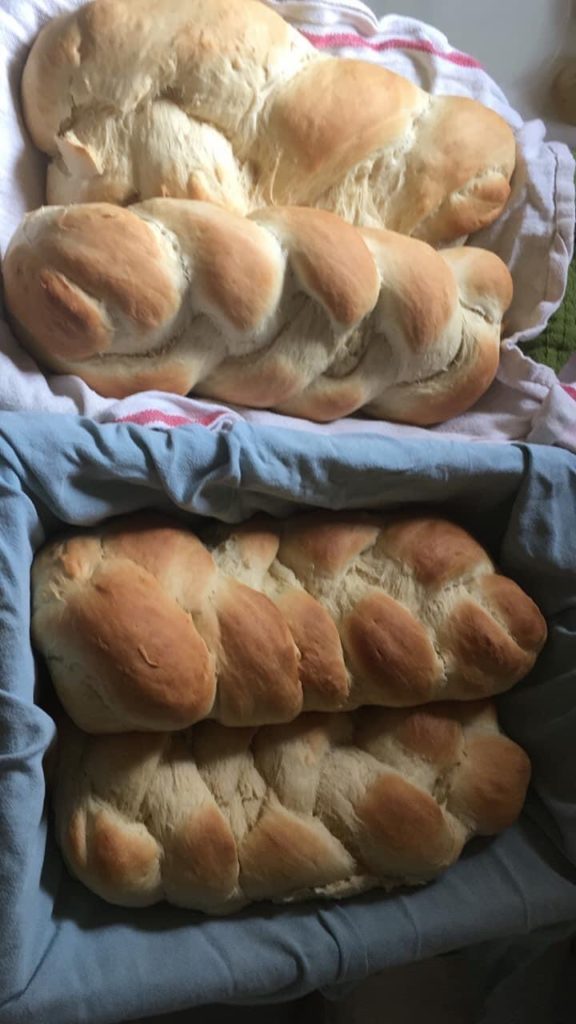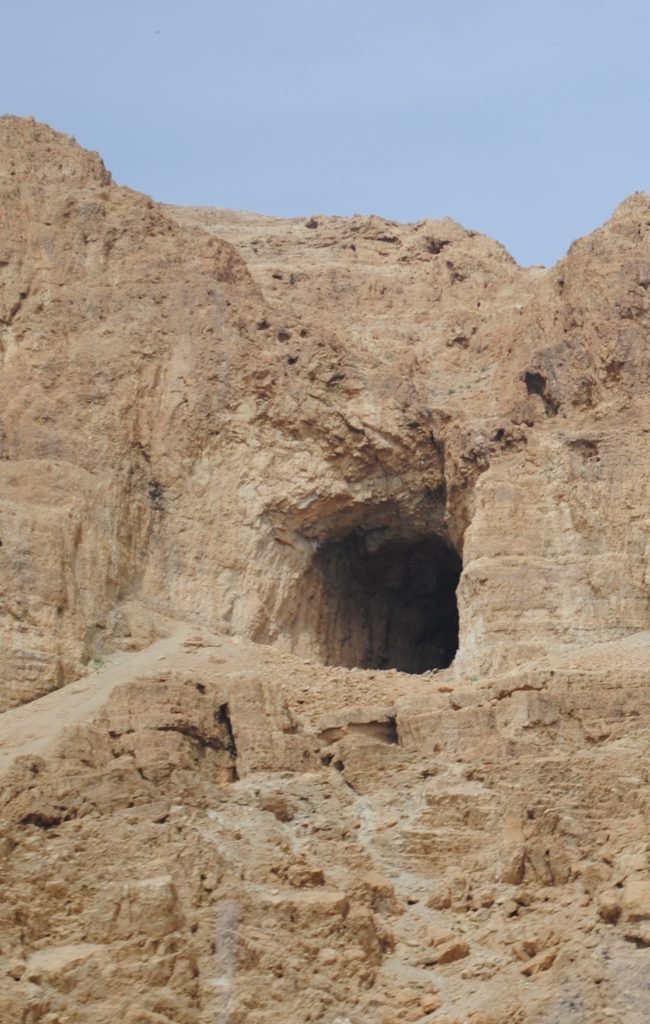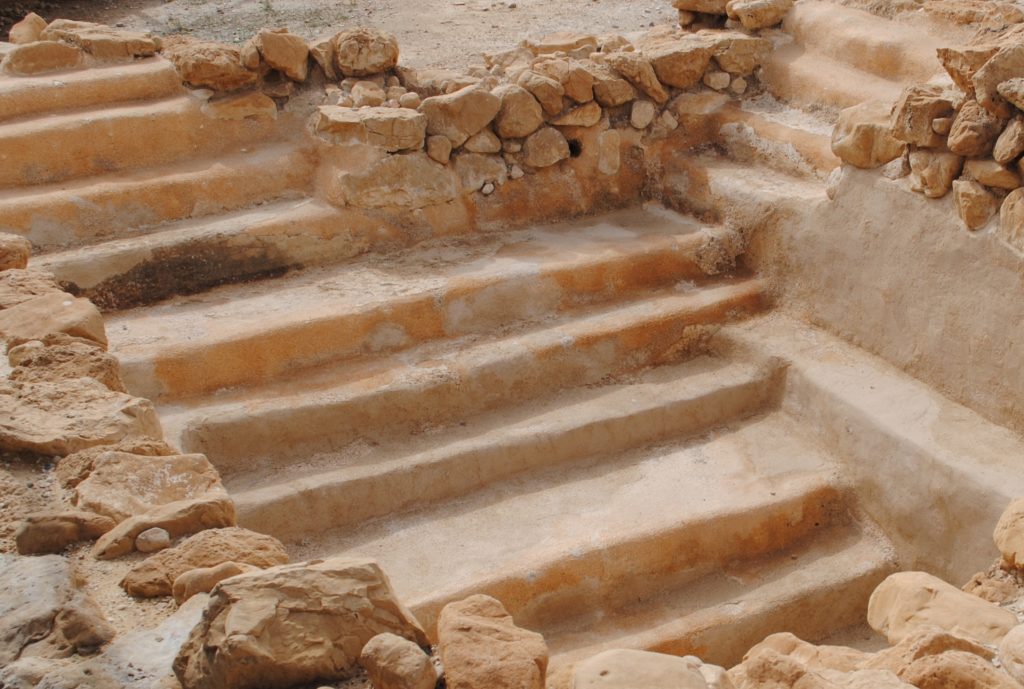Last year, 2021, celebrated 75 years since the three bedouin cousins who were searching for a missing goat discovered ancient scrolls in a cave. These are known as the Dead Sea Scrolls.
I looked up and used my camera to get a picture of the entrance to one of the caves where scrolls have been found over the years. Visitors are not allowed close to the caves. The windblown paths are too delicate to allow tourist traffic.
These scrolls are famous and well known, but this cave and the mountain look down on something I found to be more interesting — the settlement of Qumran.
A Jewish sect called Essenes lived in Qumran. These men are believed to have copied the scrolls written prior to 68 A.D.
They lived a simple life of work and worship. They refused to participate in the politics and the religious ceremonies corrupted by the culture in Jerusalem. It is hard to see in my pictures, but the steps leading to the cleansing and purification baths are polished by men descending and ascending.
In the late 60’s A.D., Israel was in a revolt against their Roman conquerors. The Essenes knew they would soon be killed and their homes destroyed by the Roman soldiers putting down the revolution. They placed the scrolls with the sacred writings of their faith, the Tanakh, what we call the Old Testament in jars to be preserved in the dry desert air. They worked on this until the very end.
As I sat on a bench overlooking some of the excavation, I visualized these men laboring only for their God and their faith, not concerned about their lives.
How would it feel to live away from the political and religious division in my world today? Do I have the faith to be this faithful?







